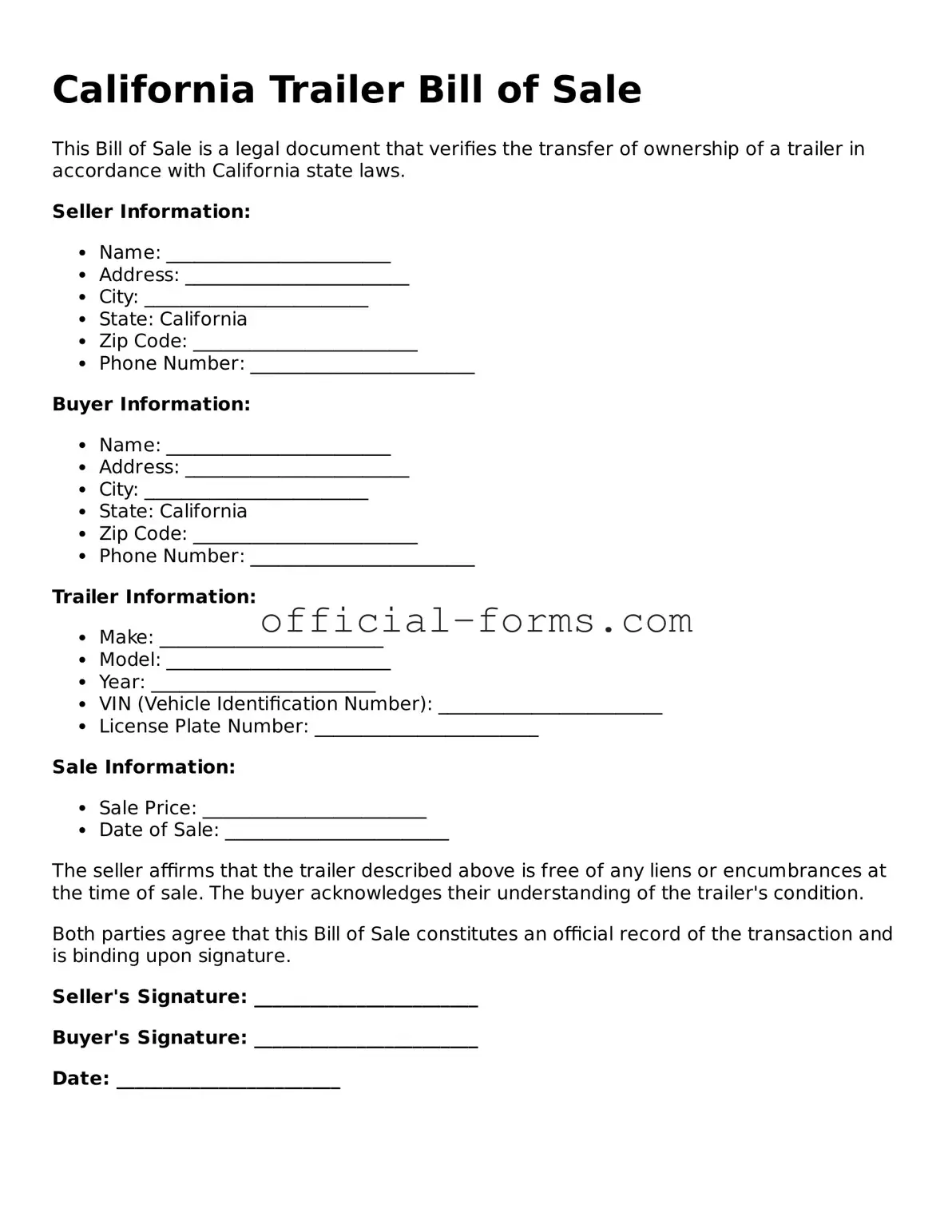Official California Trailer Bill of Sale Document
The California Trailer Bill of Sale form is a legal document used to transfer ownership of a trailer from one party to another. This form serves as proof of the transaction and includes essential details such as the buyer's and seller's information, trailer specifications, and sale price. Properly completing this form is crucial for ensuring a smooth transfer of ownership and for registering the trailer with the Department of Motor Vehicles.
Open My Trailer Bill of Sale Now
